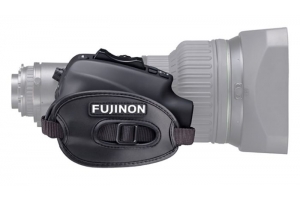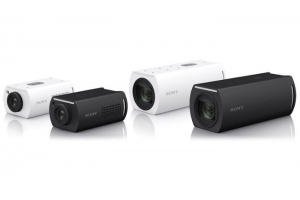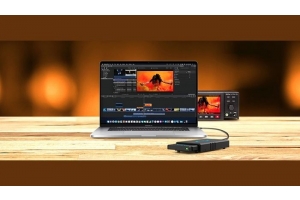How to Extend an Ultra HD or 4K HDMI Signal
HDMI is a standard signal that is being used in a plethora of consumer goods. HDMI stands for High-Definition Multimedia Interface. HDMI is a proprietary standard meant to send signals coming from a source, such as a camera, Blu-ray player, or gaming console, to a destination, such as a monitor. It directly replaces older analog standards such as composite and S-Video. HDMI was first introduced to the consumer market in 2004. Over the years, there have been multiple newer versions of HDMI, all using the same connector. Currently, the latest version is 2.1, compatible with 4K and 8K resolutions and bandwidths up to 42,6 Gbit/s.

HDMI has initially been intended as a consumer standard, while SDI was designated as an industry standard. Because of this, HDMI natively doesn’t support long cable lengths, especially when the resolutions go beyond 1080p. SDI can run up to 100m in cable length in 1080p50/60 (3 Gbit/s), while HDMI can stretch to a maximum of 15m in the same bandwidth. There are several ways of extending HDMI beyond that 15m. In this article, we’ll talk about the most common methods of extending an HDMI signal.
Cable Quality
If you go beyond 10 meters, the signal begins to lose its quality. You can easily spot this due to the signal not arriving at the destination screen or artifacts in the signal that make the signal not viewable. HDMI uses a technology called TMDS, or transition-minimized differential signaling, to ensure the serial data arrive in an orderly fashion. The transmitter incorporates an advanced coding algorithm that reduces electromagnetic interference over copper cables and enables robust clock recovery at the receiver to achieve high skew tolerance for driving long cables and shorter low-cost cables.
To reach cables lengths of up to 15m, you need high-quality cables. Don’t let a salesman fool you into buying the most expensive consumer cables out there because most of the time, they are the same as the cheaper ones. Since HDMI is a fully digital signal, there is no way to signal to be of lesser quality than any other cable. The only thing that happens is signal drop-off when sending high bandwidth signals over a too-long cable or a cable that isn’t rated for the specific HDMI standard.
If you want to reach 15m with a regular cable, please ensure that the cable you’re using is rated for HDMI 2.1. Due to TMDS, the signal will either arrive perfectly well or it doesn’t arrive at all. An incorrect HDMI signal will have a specific static over it, called sparkles. These sparkles are pixels that aren’t translated back into the proper signal and shown in white. This form of signal error is quite rare, and it will more likely result in a black screen, no signal at all.
Extending HDMI
HDMI was quickly accepted as the primary interface for transporting video and audio in all kinds of consumer products. Because HDMI also transports audio, it quickly became the standard for projectors and big screens in conference rooms. And because DSLRs and consumer-grade cameras also have HDMI interfaces, professional video solutions received HDMI as well. Since it's so widely accepted as an interface and available on pretty much any consumer LCD panel, it is a lot more cost-effective to use in video installations. In video installations, the users bumped into the problem that the maximum cable length could only be 15m. There are multiple ways of overcoming this problem:

Convert HDMI to SDI and back
When you convert the HDMI signal into SDI and back at the destination site, you effectively extend the signal up to 130m. This method used the maximum cable length at the transmission side, converted into SDI, used the full cable length of 100m, and converted back after using the full-length HDMI cable again. This method requires high-quality SDI cable and two active converters and is not preferable due to cost.
+ SDI is a very robust technology
+ Supports up to 130m and further when using red lockers
- SDI in high quality for 4K video is not very cost-effective
- Active converters can be expensive
Convert to HDBaseT and back
When you convert an HDMI signal to HDBaseT, and back you can reach long cable lengths over very cost-effective CAT-6 or better cable. The actual maximum length varies on which hardware you use, but most of the time, 50m+ is perfectly possible. HDBaseT can also send power to your device to not need local power on one side. Again, this is depending on the hardware used.
+ HDBaseT is a very robust technology with the support of up to 4K resolution
+ HDBaseT uses very cost-effective cabling in the form of CAT-6 ethernet cable
- Ethernet cable connectors (RJ-45) can be fragile
- Maximum cable length depending on the hardware used
Use Active HDMI Cables
Active HDMI cables are cables that have a built-in converter from regular copper to an optical fiber. This way, the actual cable is a skinny optical fiber in rubber insulation. This type of cable is perfect if you need to install it in a fixed installation, such as an office building. The cable is fragile and cannot be bent over a certain radius, and shouldn’t be stepped on or driven over by a cart. This type of extension is remotely expensive but very reliable. In some cases, one of the cable ends doesn’t power up due to the device not outputting the required voltage for the converters. These solutions go up to 100 meters with ease.
+ Active HDMI cables natively support high resolutions up to 4K
+ Fragile and long cabling solution for fixed installations
- Optical fiber cable is fragile for bending and crushing
- Not all displays or transmitters output the proper voltage for the cable
Use Active HDMI Extenders
Active HDMI extenders are a good way of extending the signal cost-effectively. Each extender adds another 15m to the maximum length. These extenders are not very expensive or complicated to use. This will be the preferred method if you need medium-length cables in a fixed installation, such as an OB Van or a cable going over a ceiling to a projector. These extenders require local or battery power and are less suited to installations that need to be mobile.
+ Cost-effective solution
+ Can use already available cables
- Needs local or battery power each cable length
- Not suited for longer cable runs or mobile installation
Datavideo solutions
Datavideo manufacturers multiple solutions for long cable runs. At this moment, Datavideo has HDMI to SDI converters, HDBaseT extenders, active HDMI, and active optical cables in their line-up. Each situation and budget require its solution. If you need assistance, please don’t hesitate to contact your local Datavideo representative found here or us.
-
HDMI to SDI converters: Datavideo DAC-45
Supports VGA/HDMI/SDI to 4K HDMI/3G-SDI multi-format up/down/cross conversion and resolutions up to 3840x2160p60. It is a cost-effective way of coverting multi-format singals. Datavideo DAC-45 not only converts 4K HDMI input to 4K HDMI output but also extends the 4K HDMI up to 100m by 3G-SDI cable with 1080p resolution in a remote installation such as a stadium or concert venue.

This pair of HDBaseT converters convert the signal into HDBaseT and extend over regular CAT-6 cable up to 60m in 1080p resolution and up to 35m in 3840x2160p30. This solution works best when you could lay the cable permanent or semi-permanent such as an office building, conference room, or school facility.

These active optical cables work perfectly in resolutions up to 3840x2160p60. They are perfect for situations where you want to permanently install a cable or where the cable isn’t exposed to wear and tear. It is not recommended to roll up the cable repeatedly. Datavideo has 30, 50, and 100-meter cables.

-
HDMI Extenders: Datavideo VP-929
These active HDMI extenders are perfect when you need to extend the signal for two or three times the maximum cable lengths. This is advisable in, for instance, OB Vans or overhead cable extensions in an office. They need local or battery power at all times and work in resolutions up to 3840x2160p60.


 Arabic (UAE)
Arabic (UAE) 





